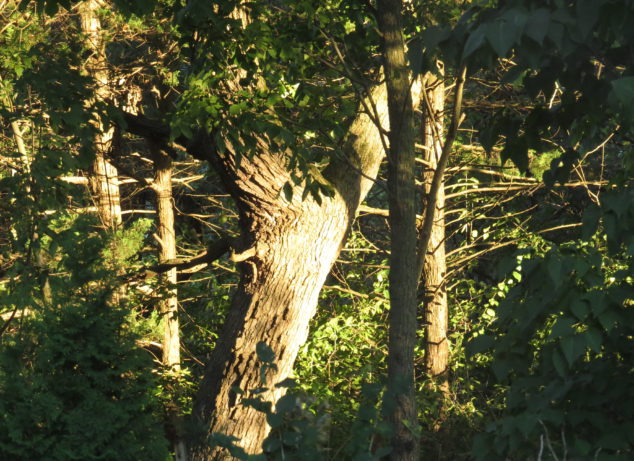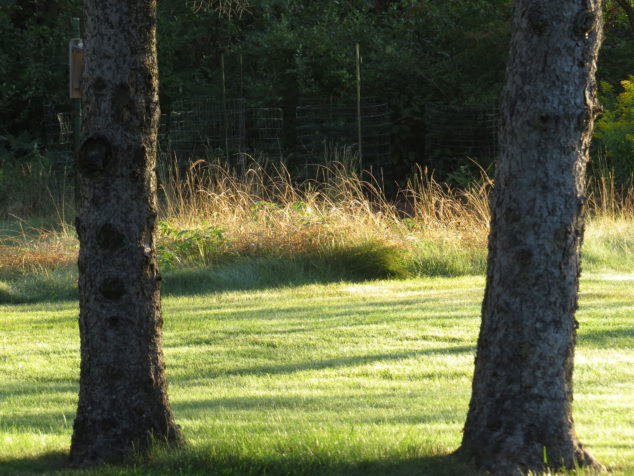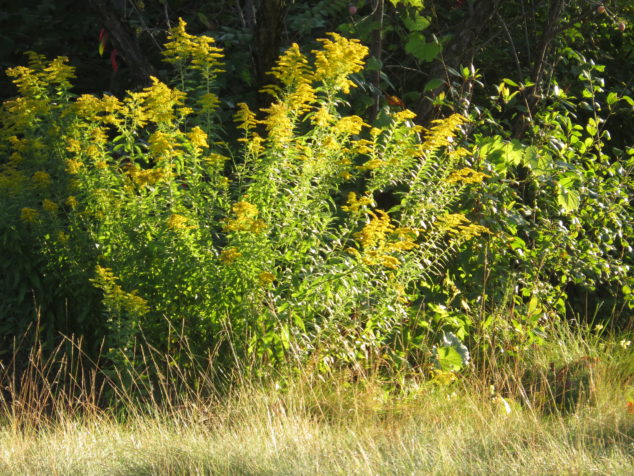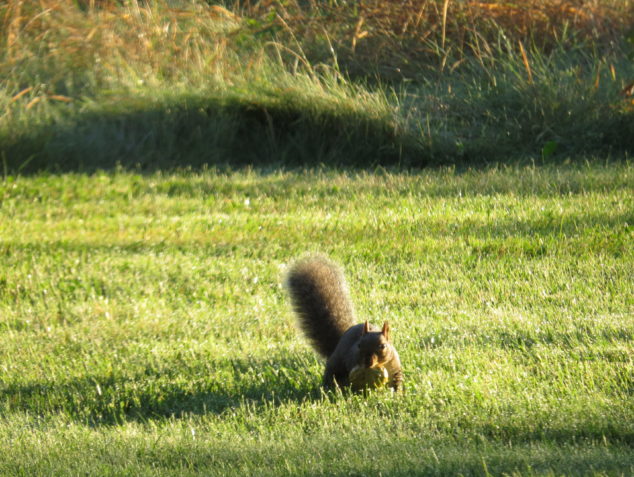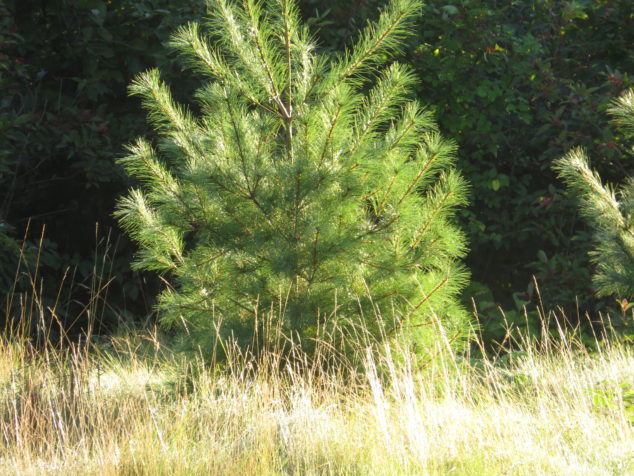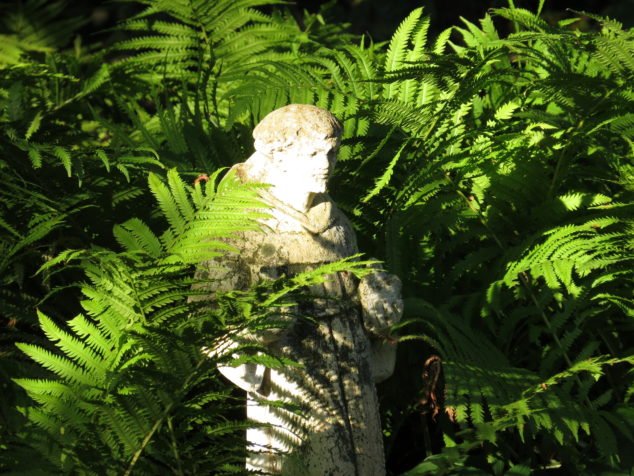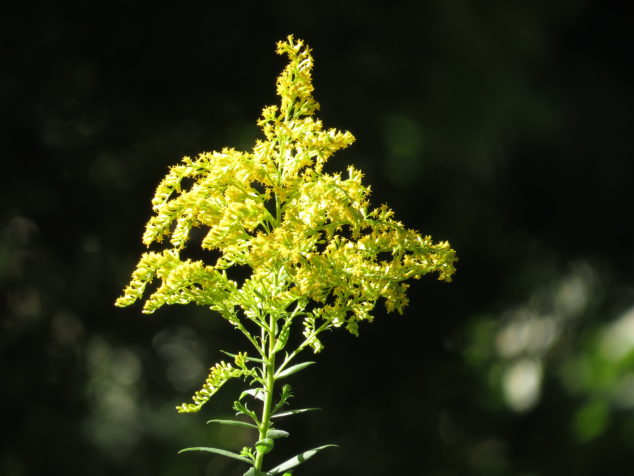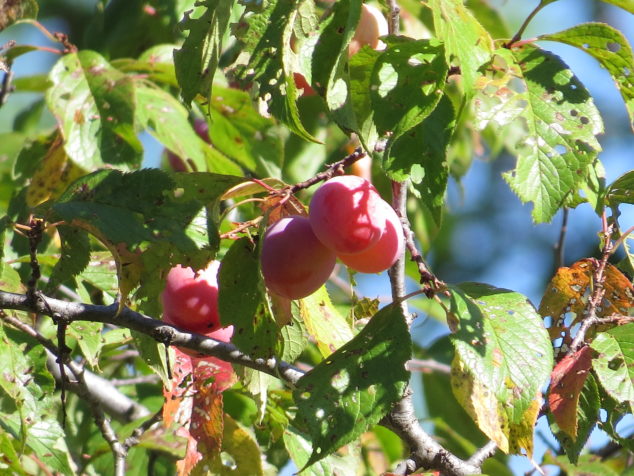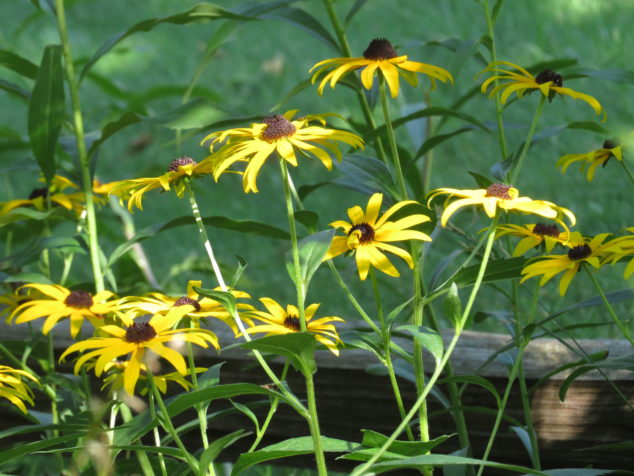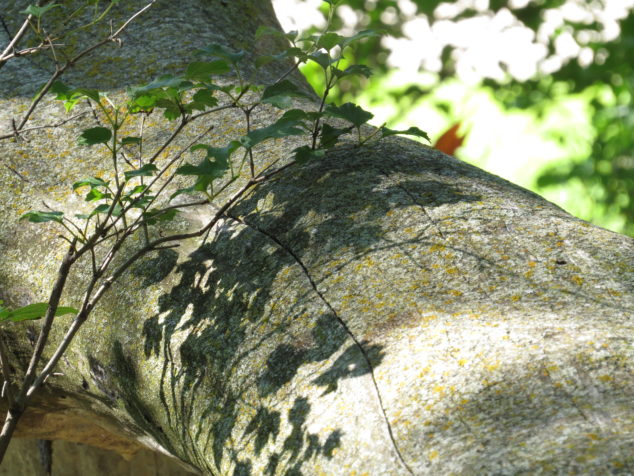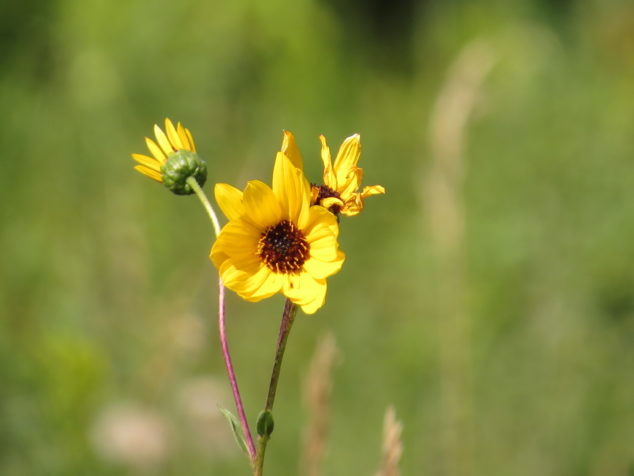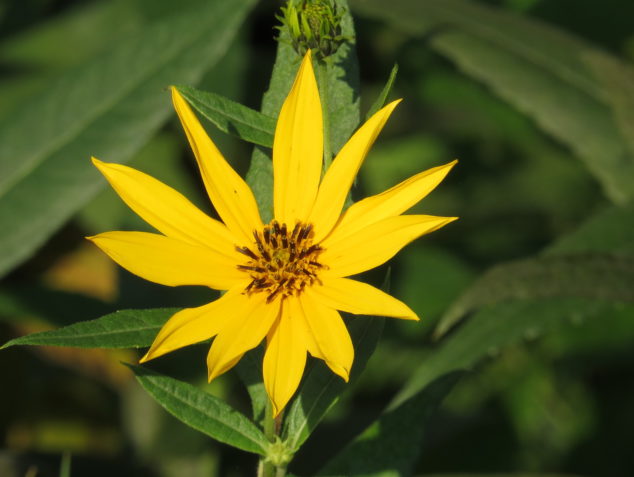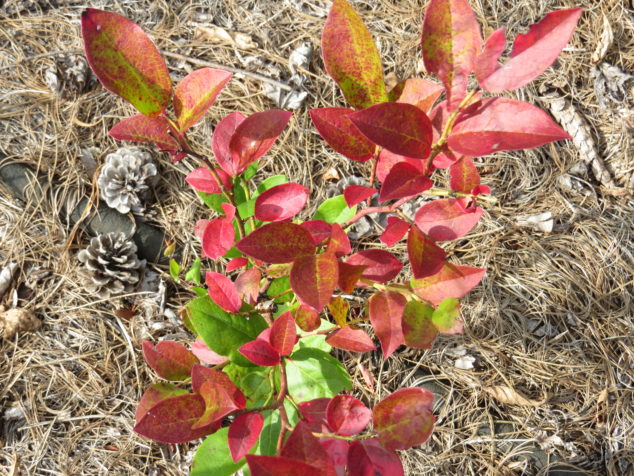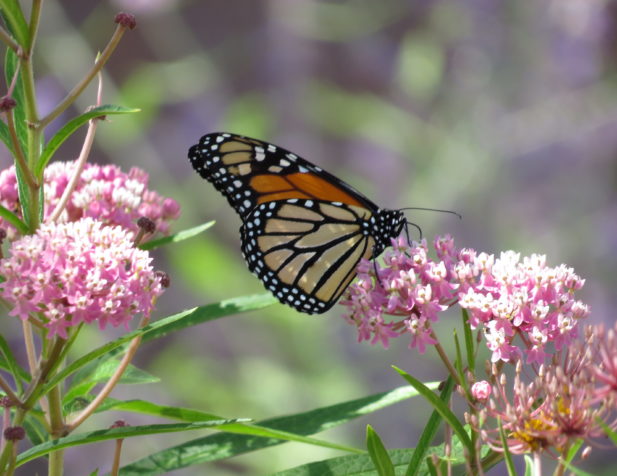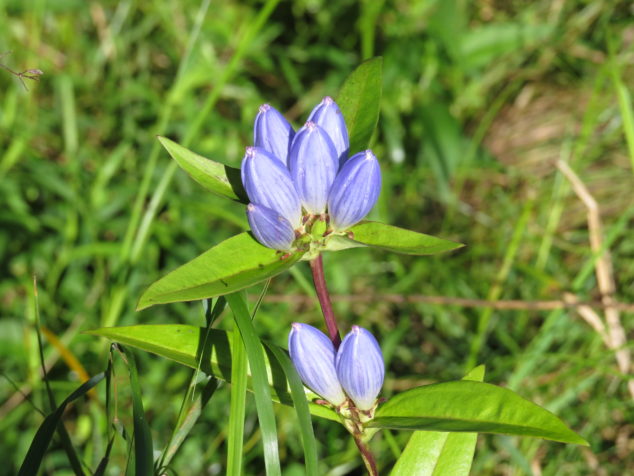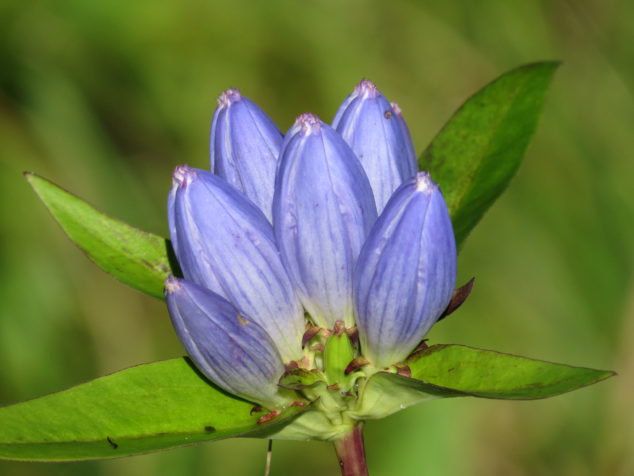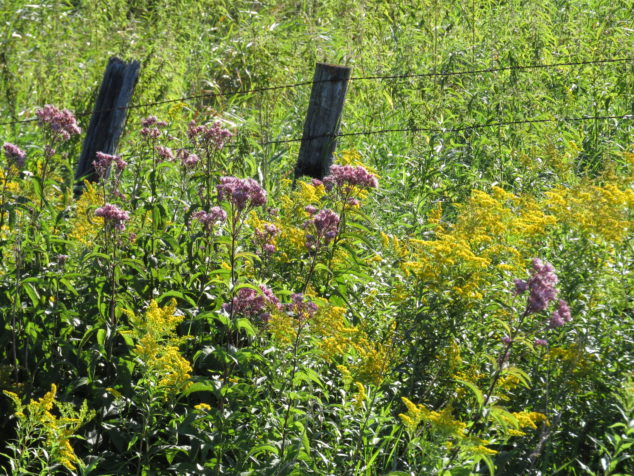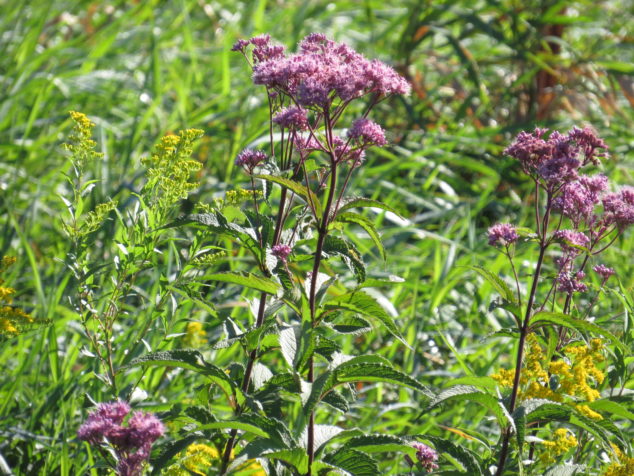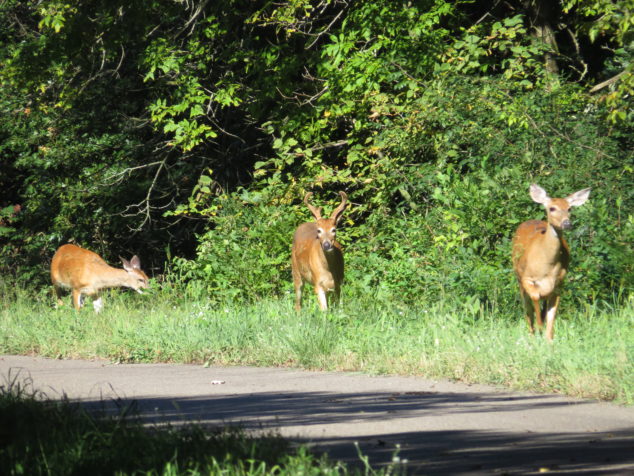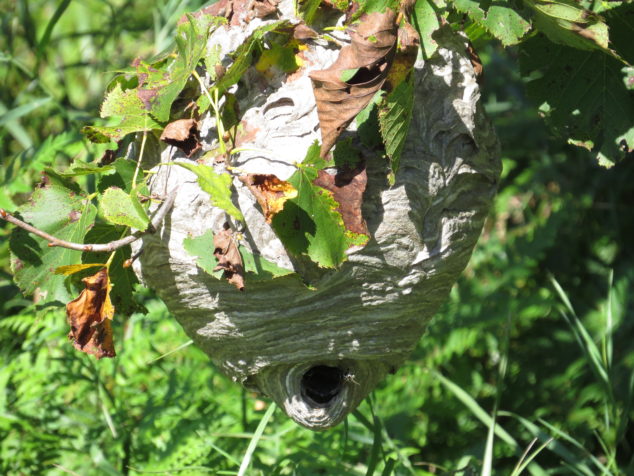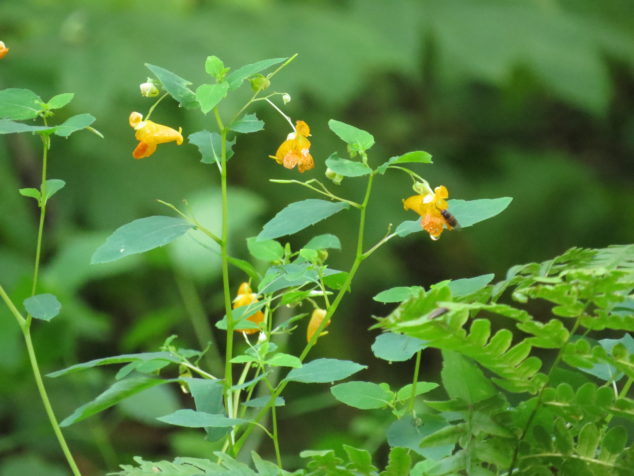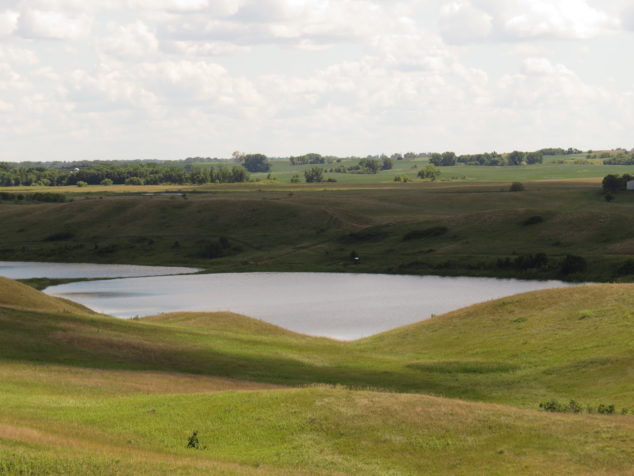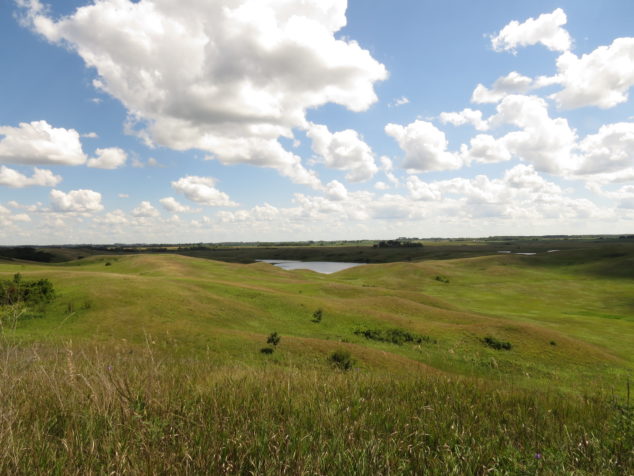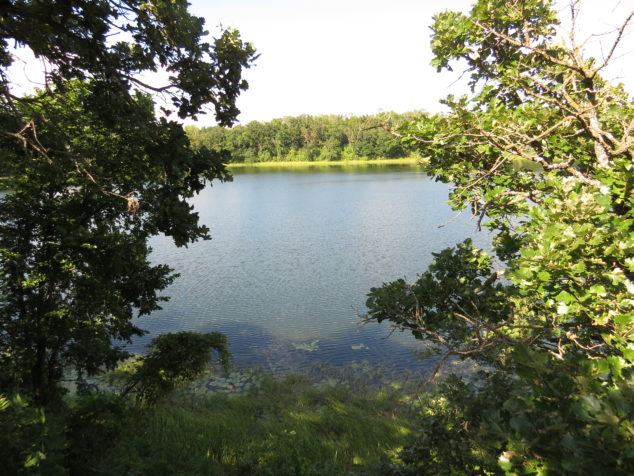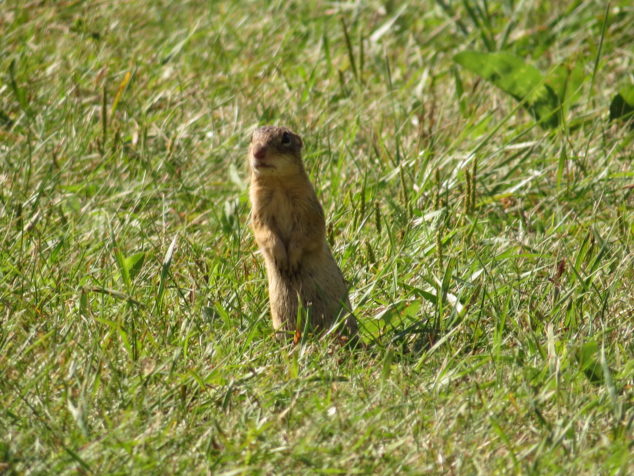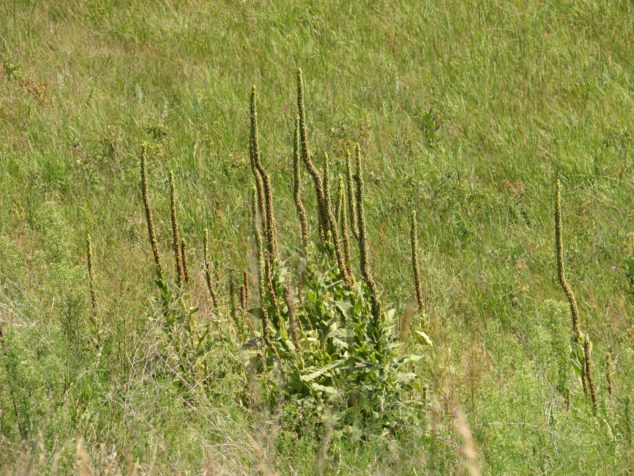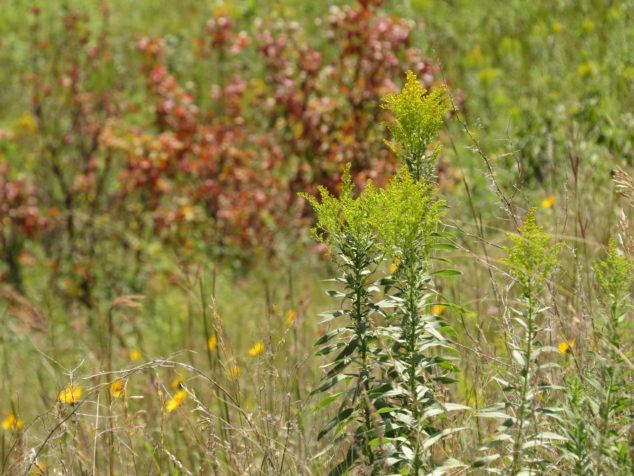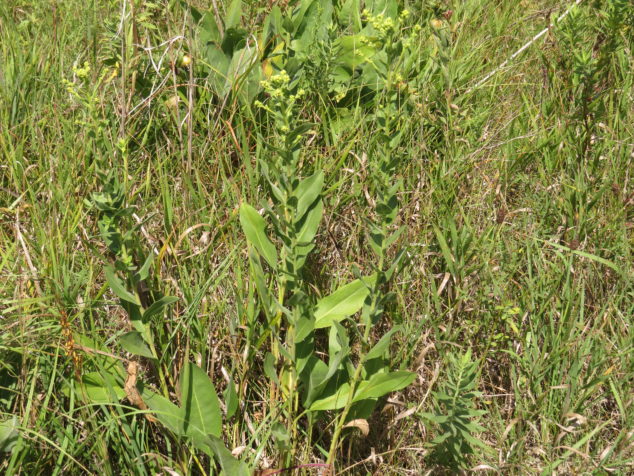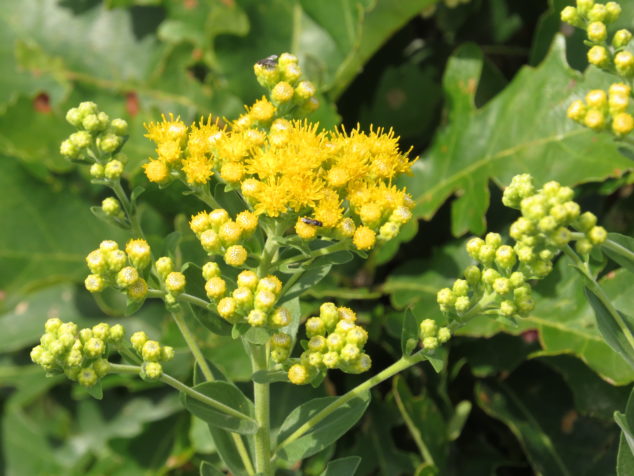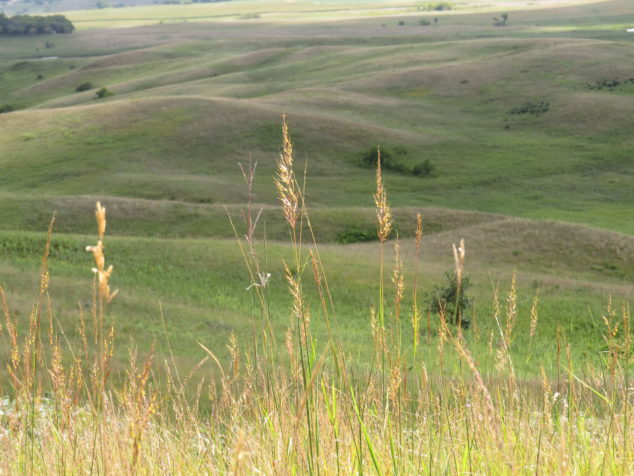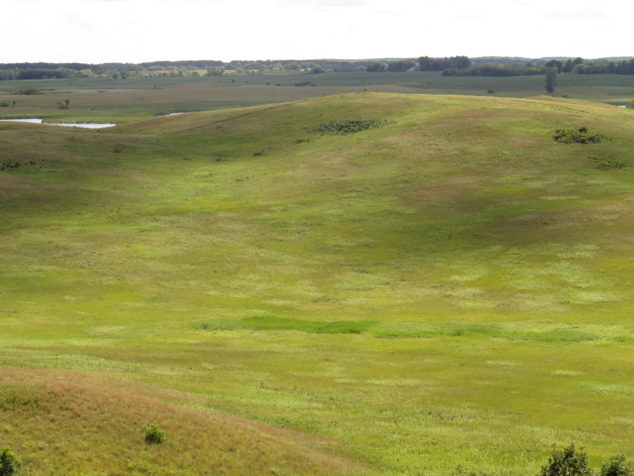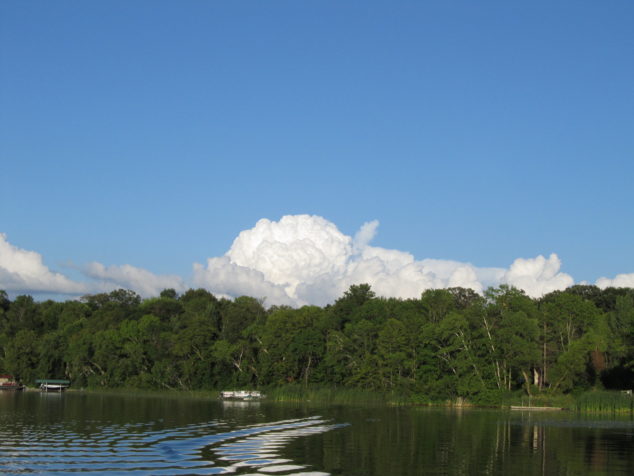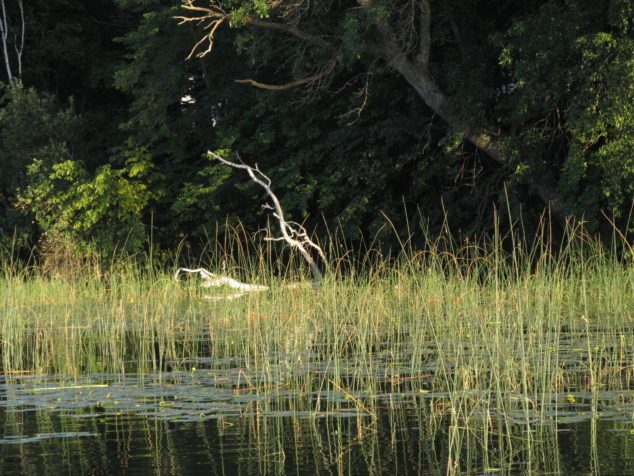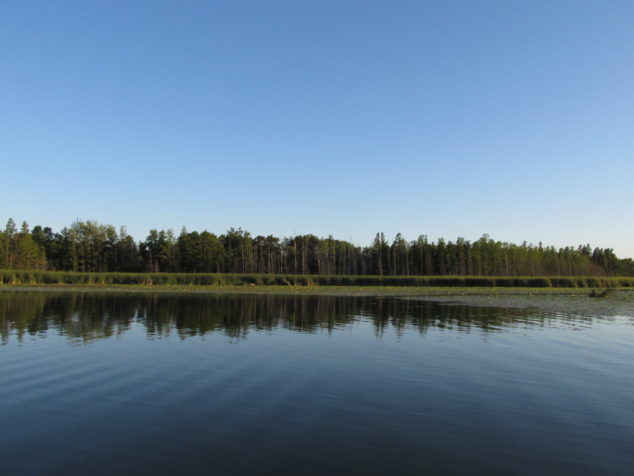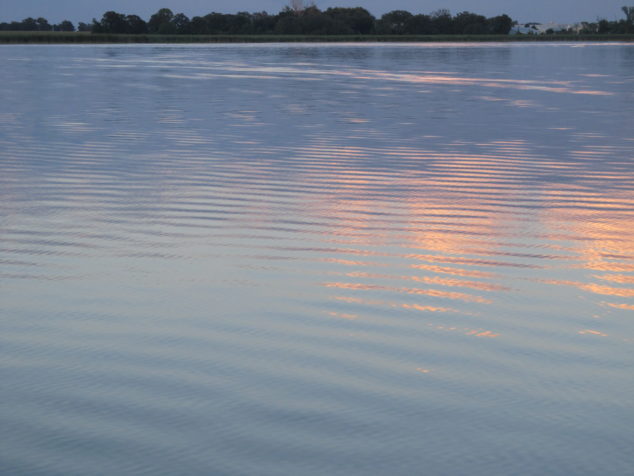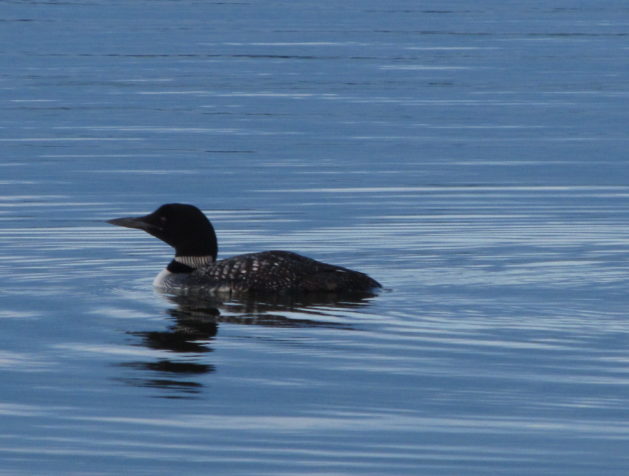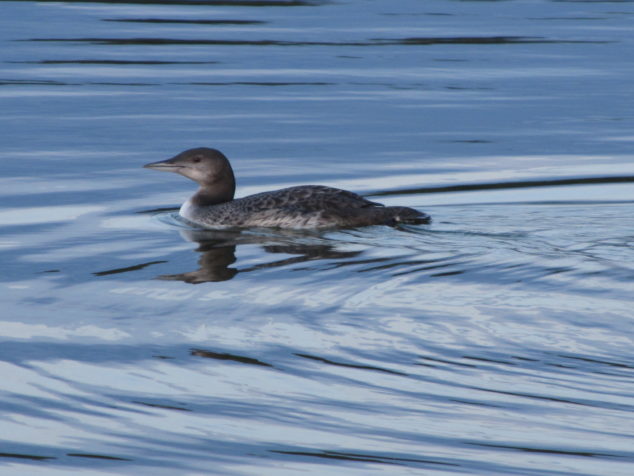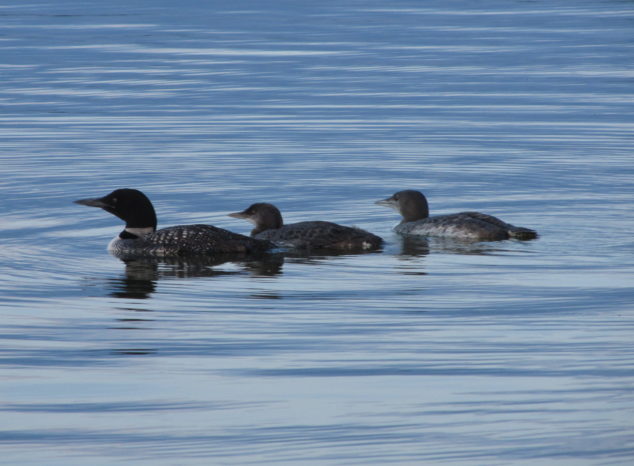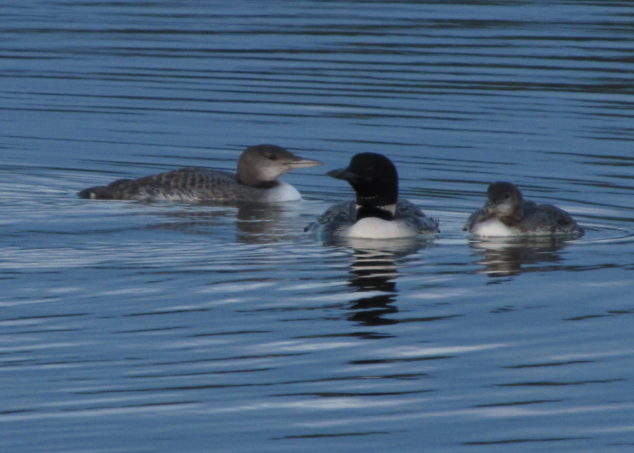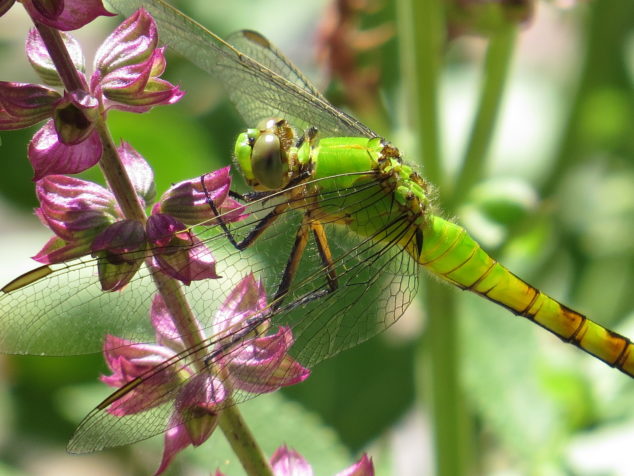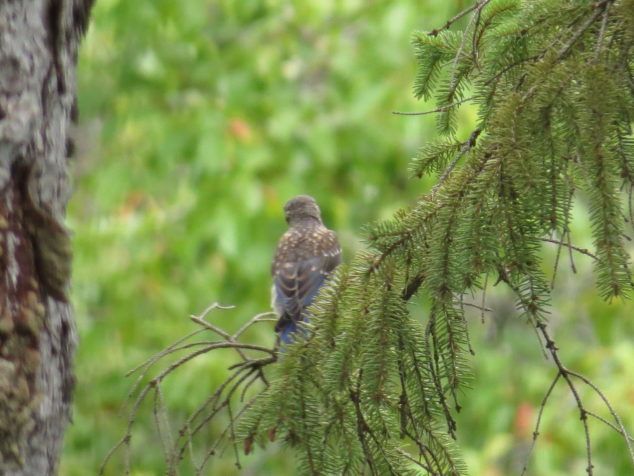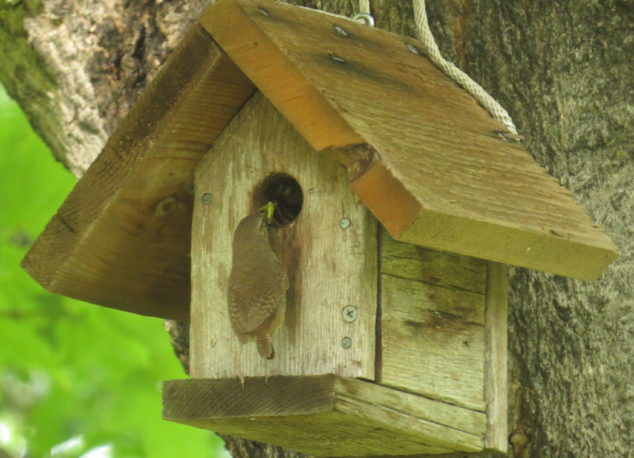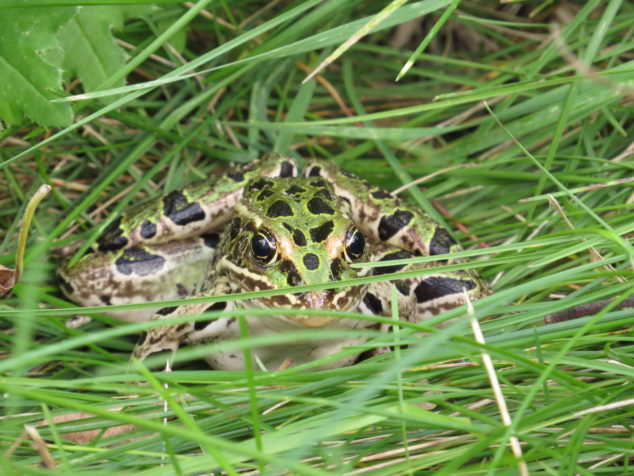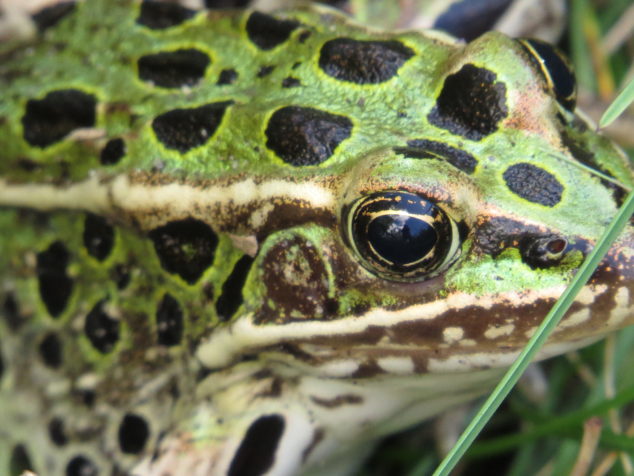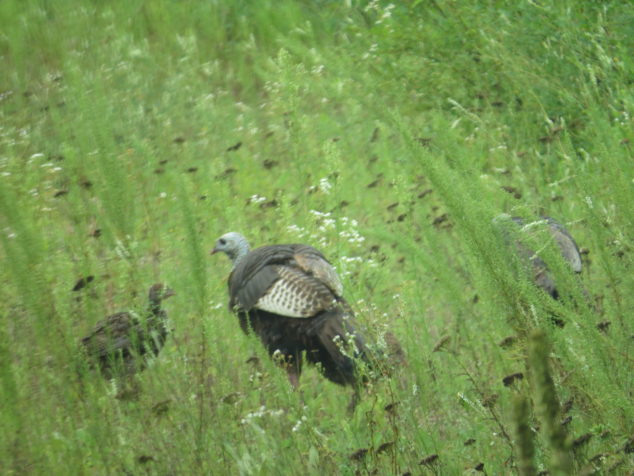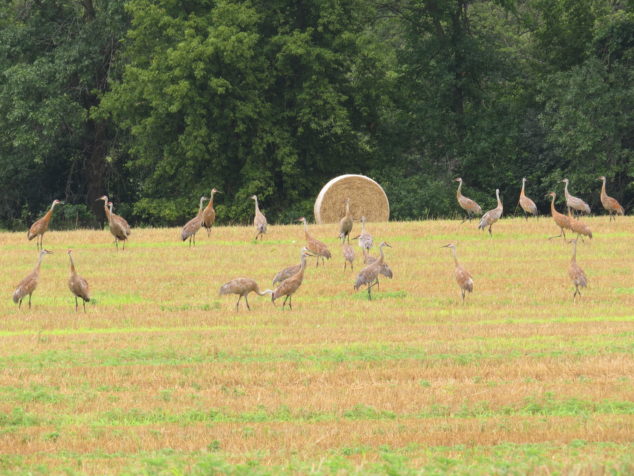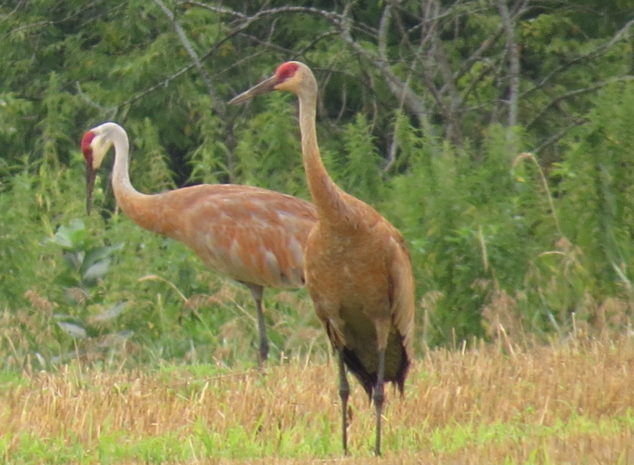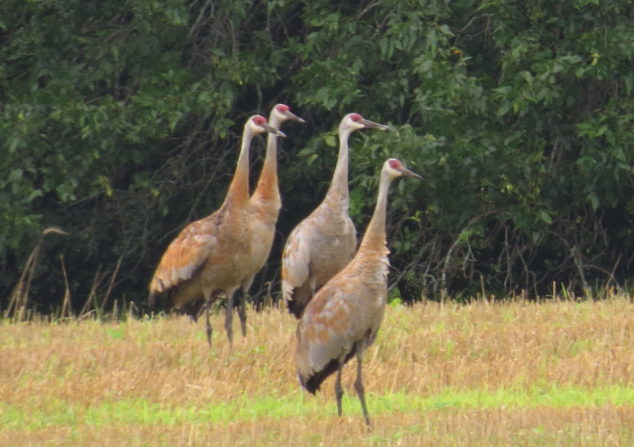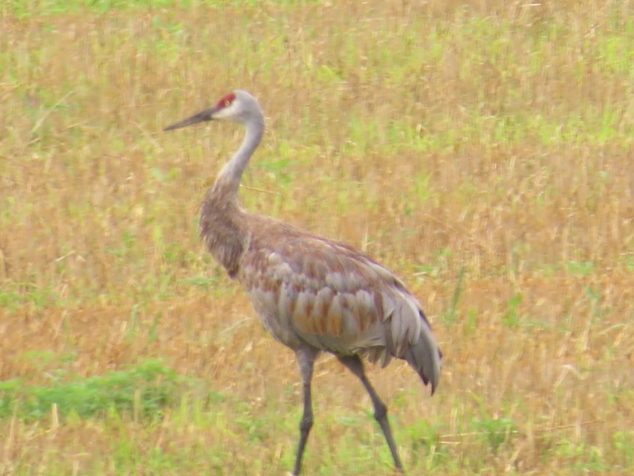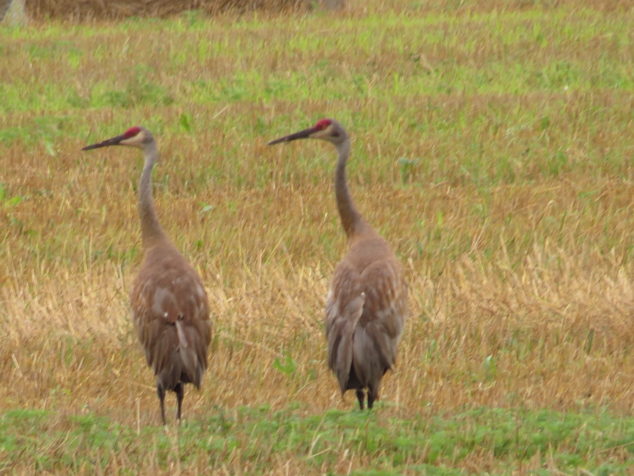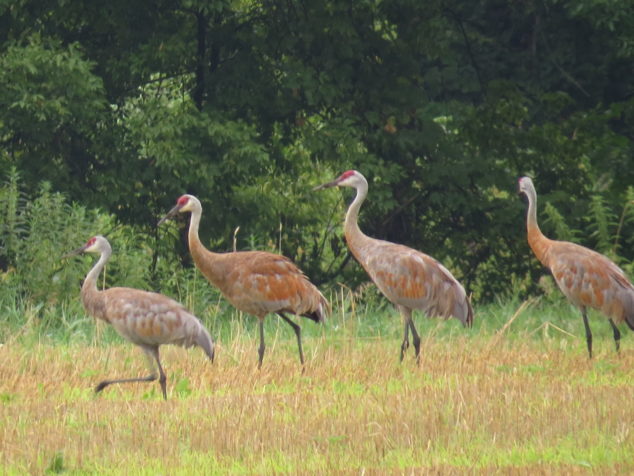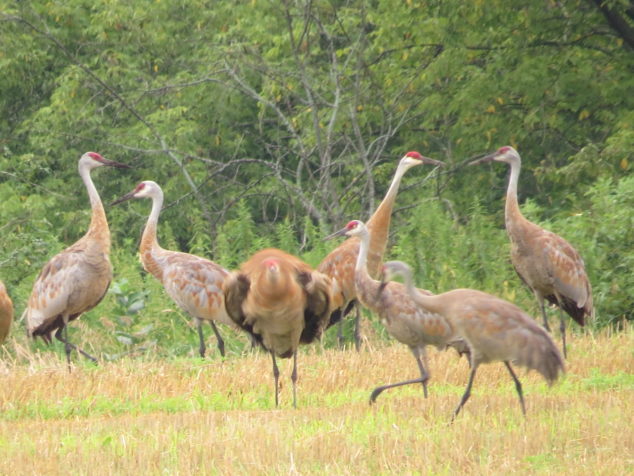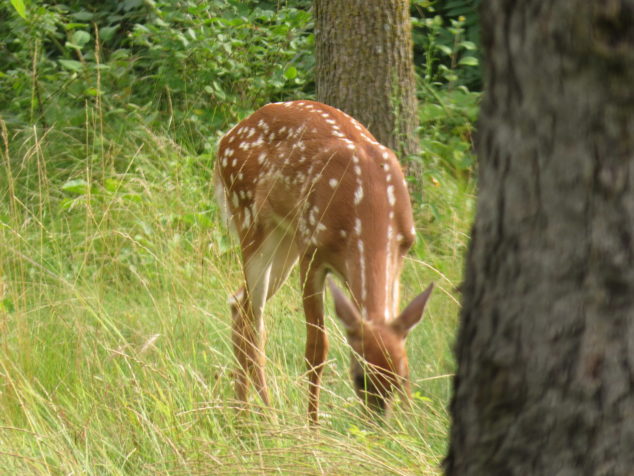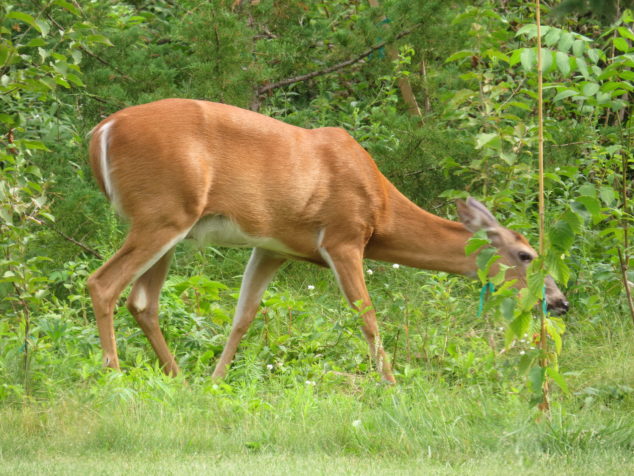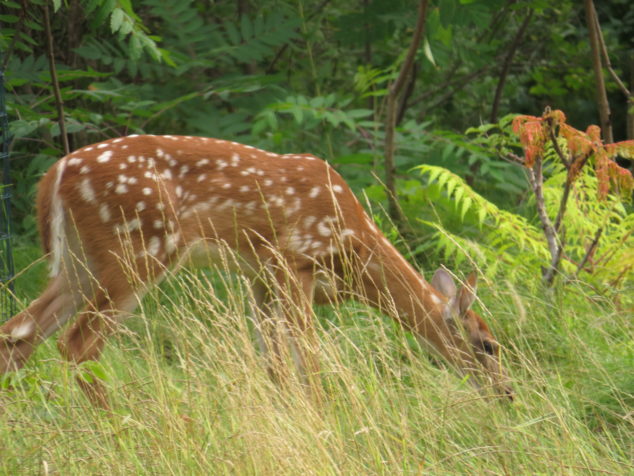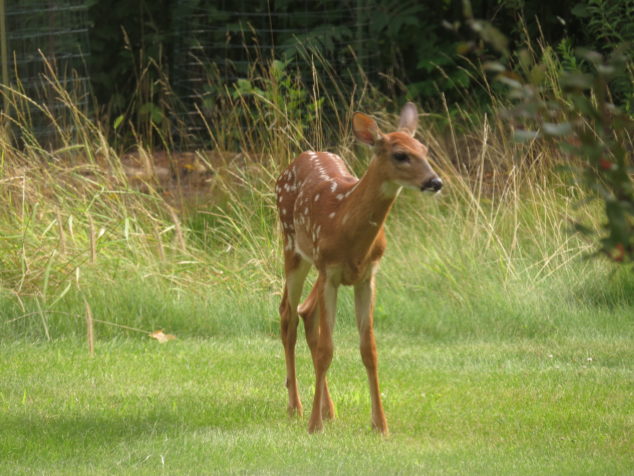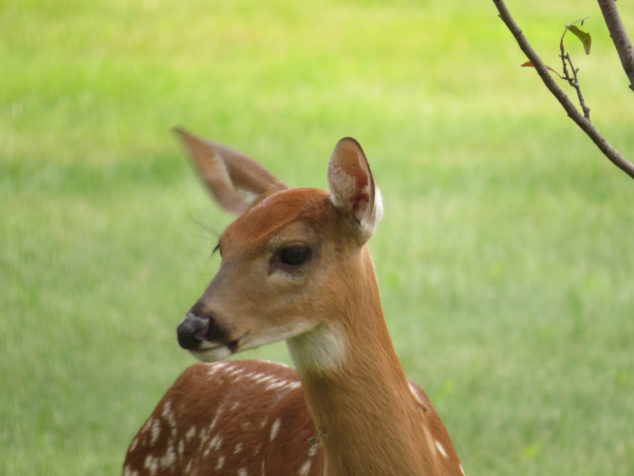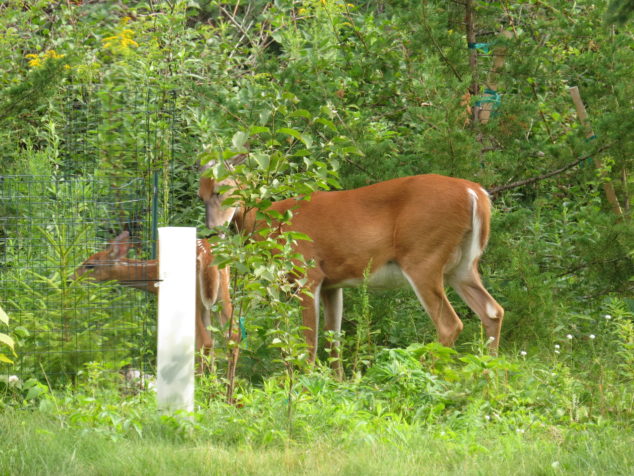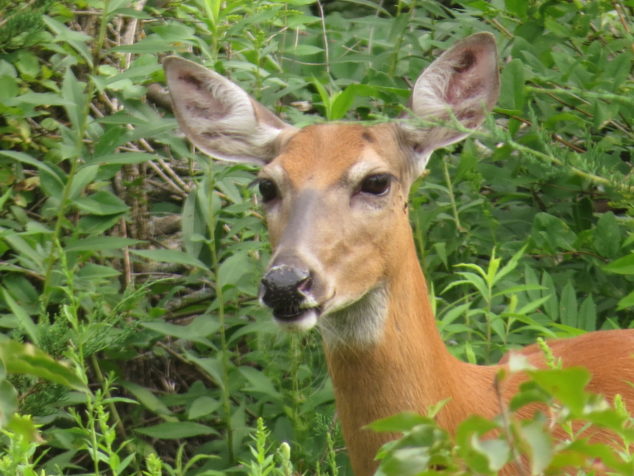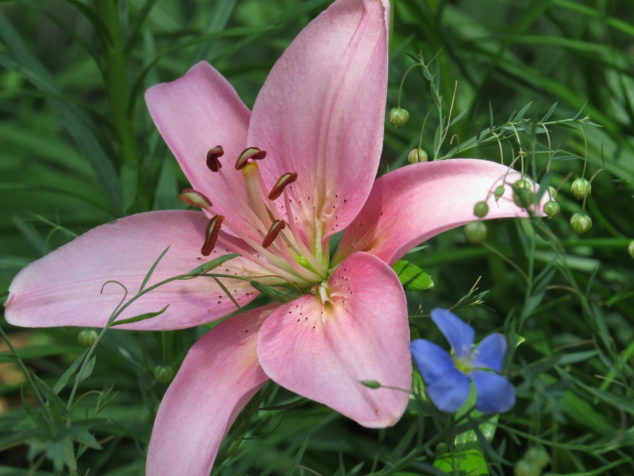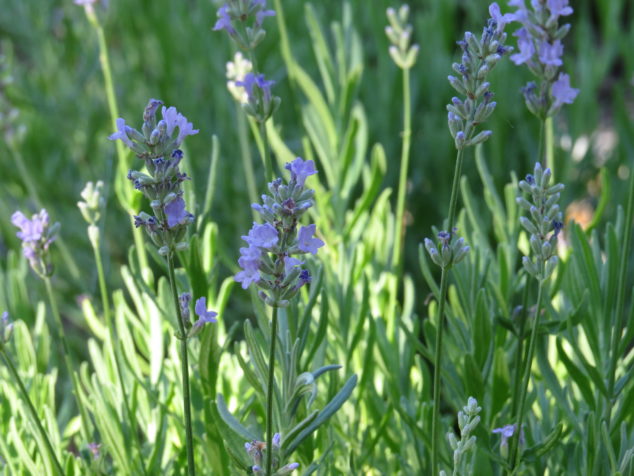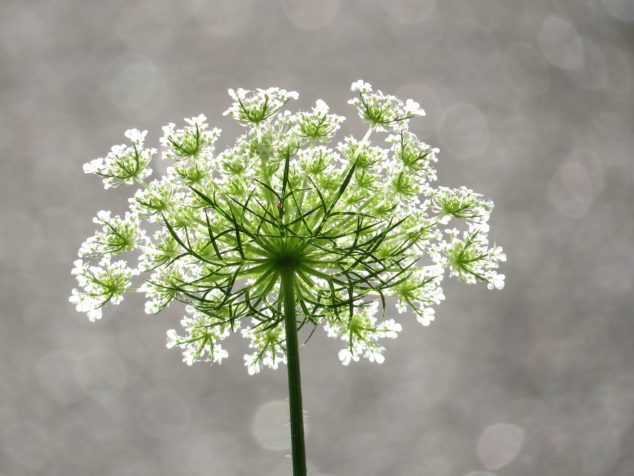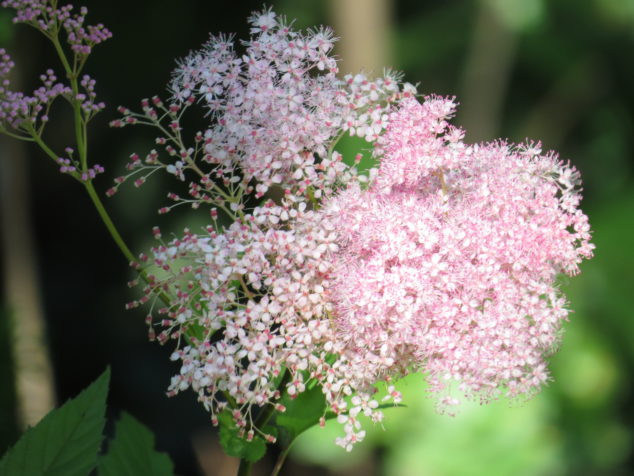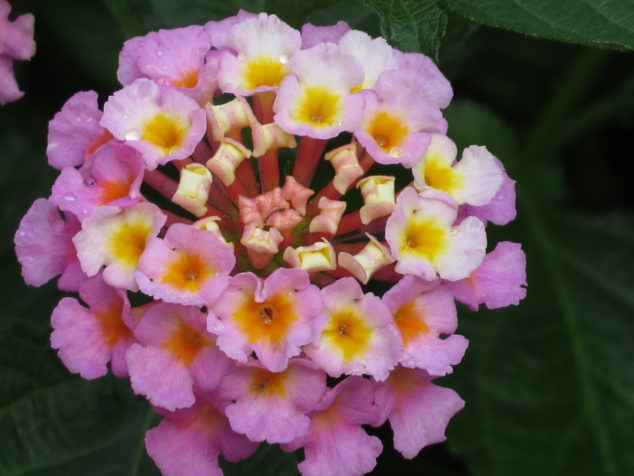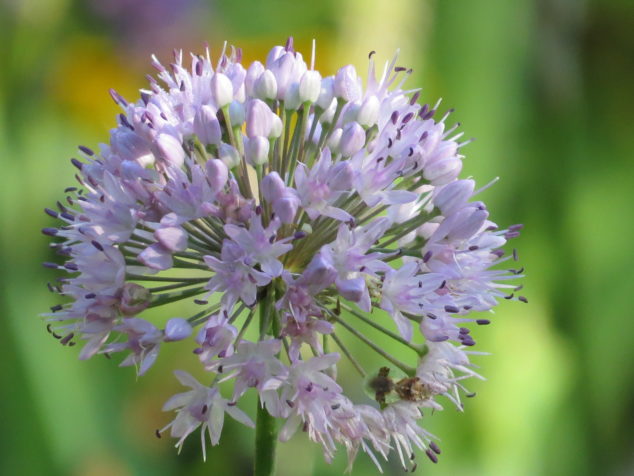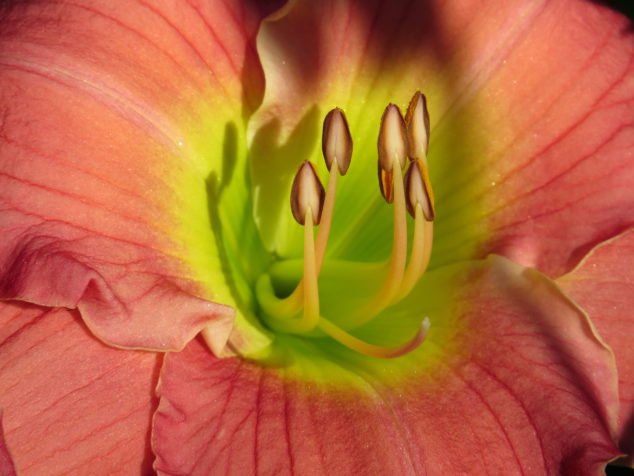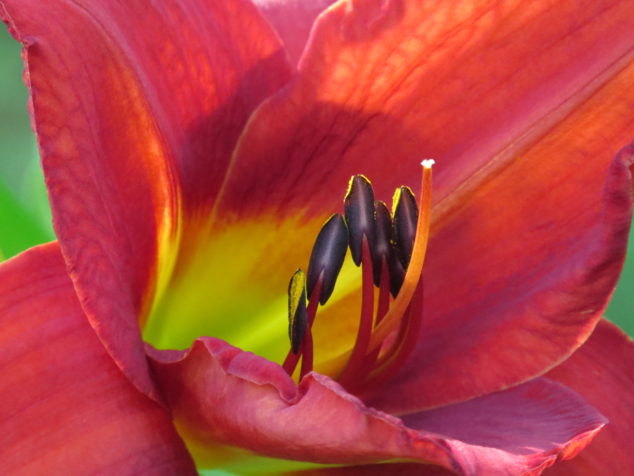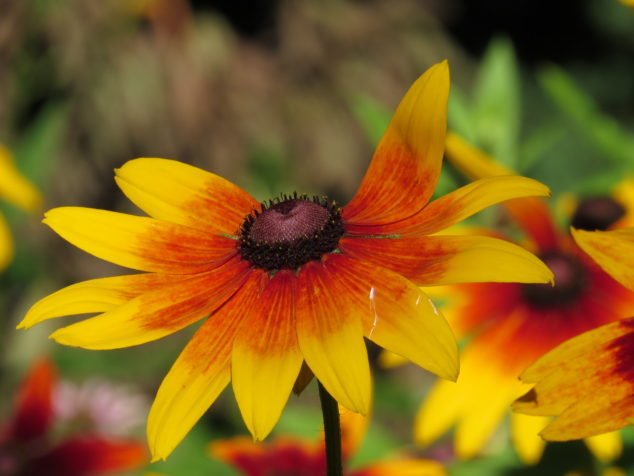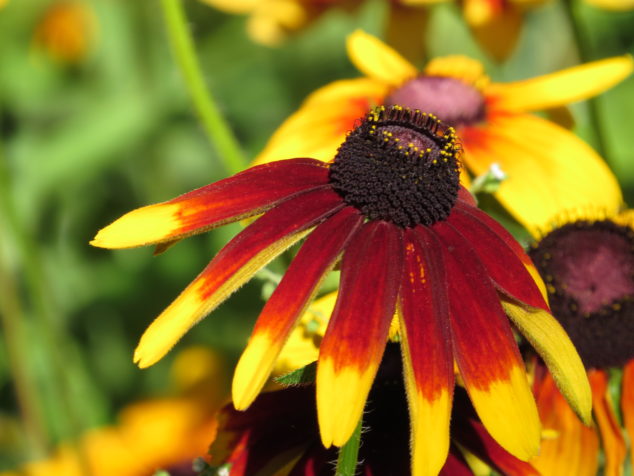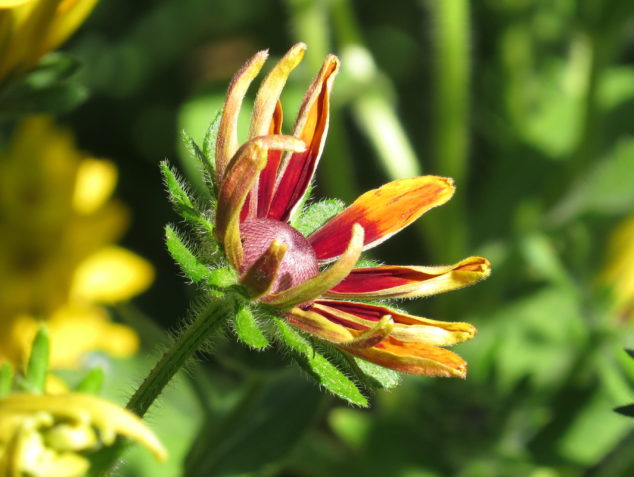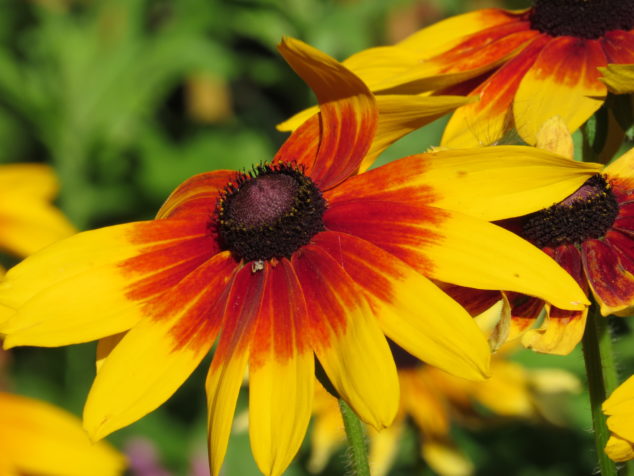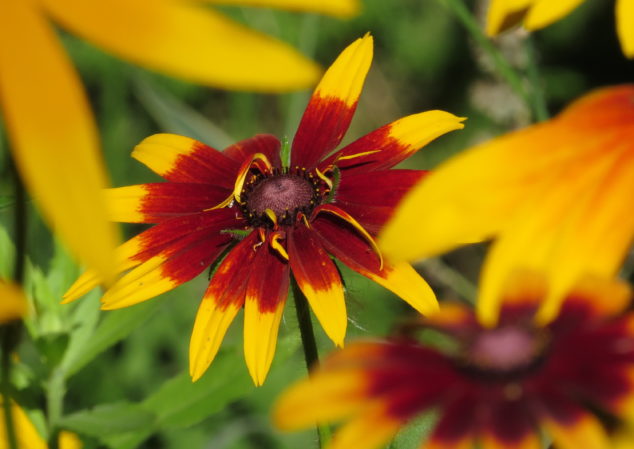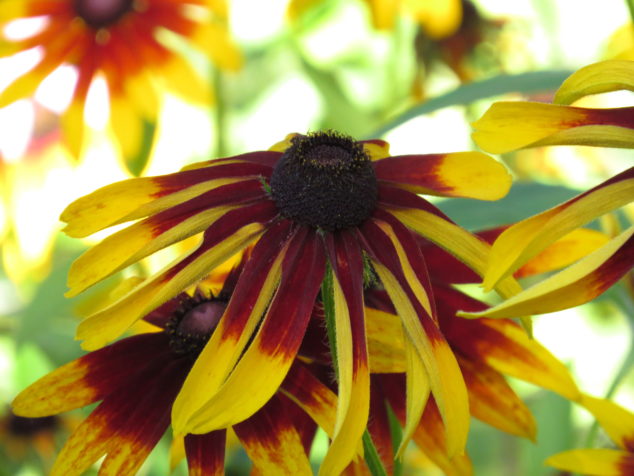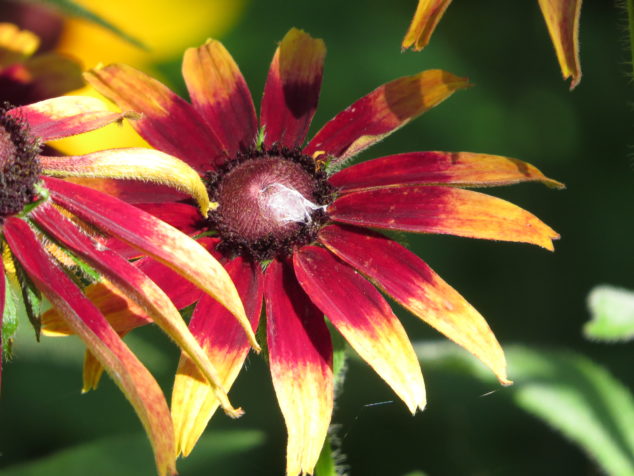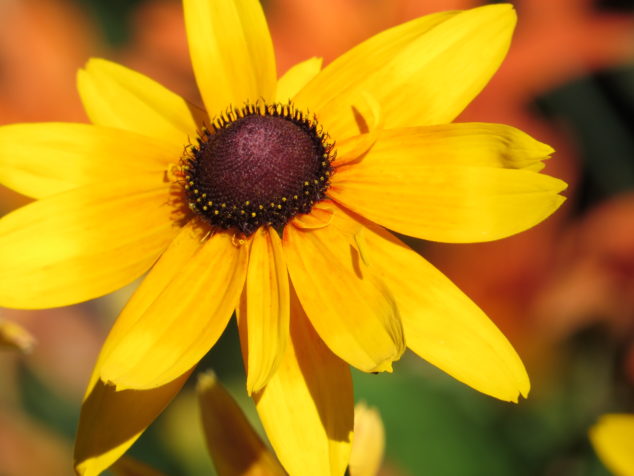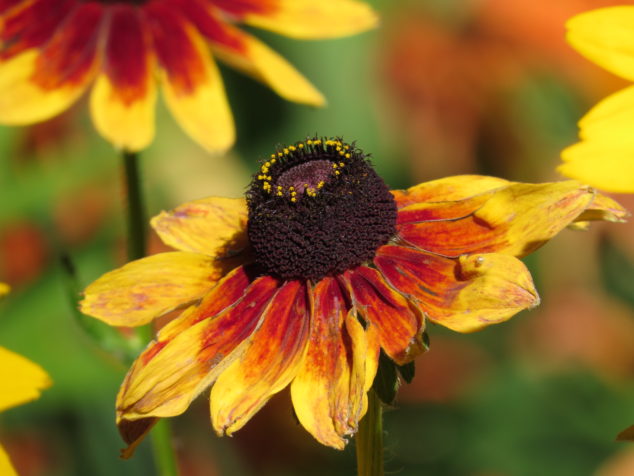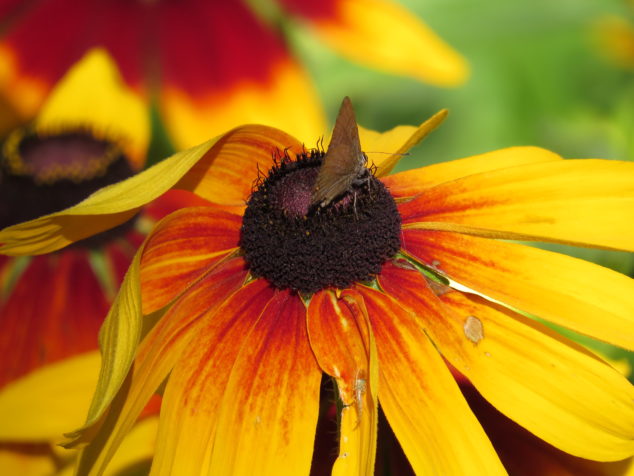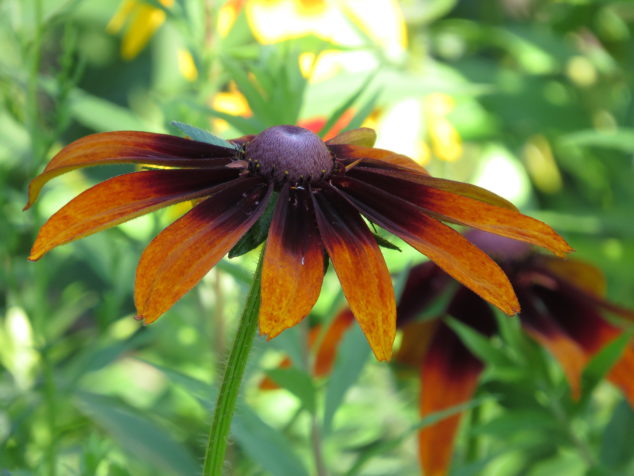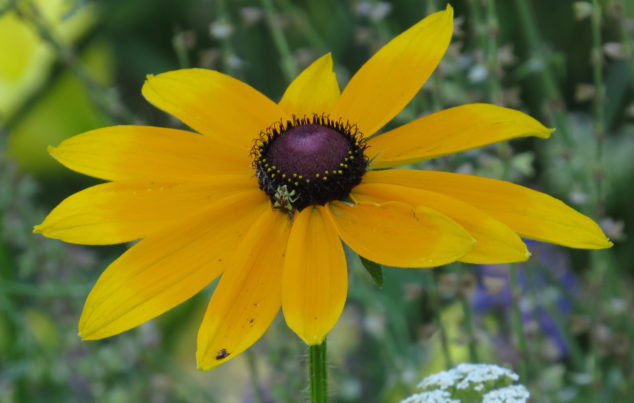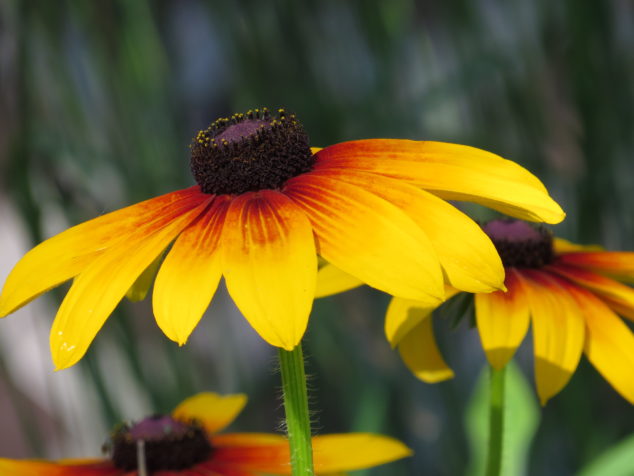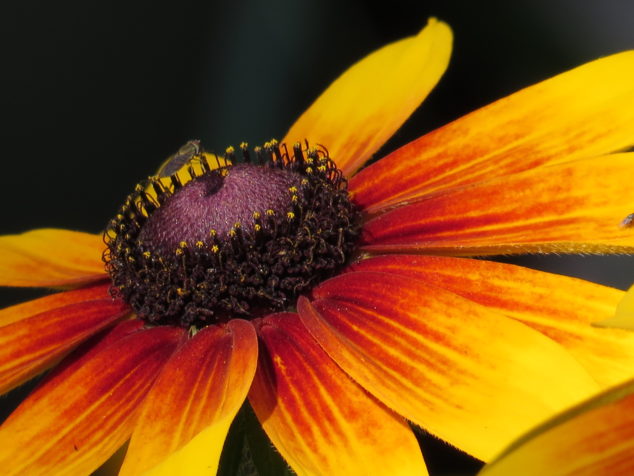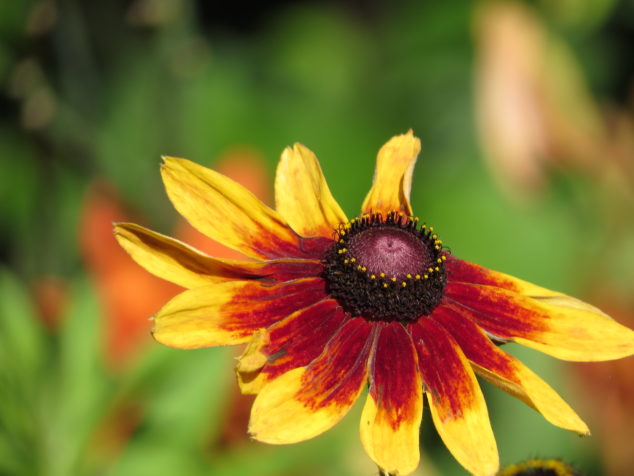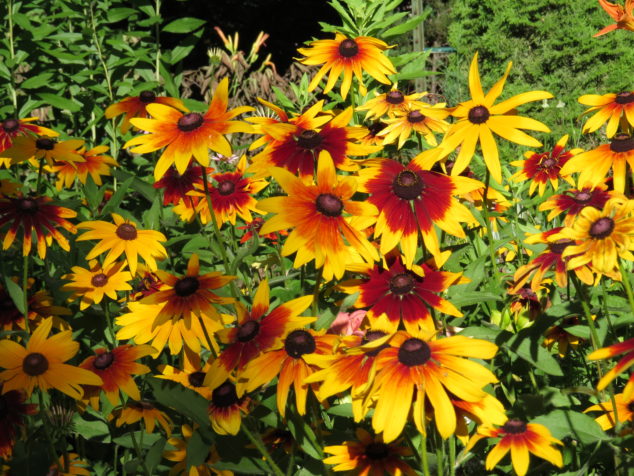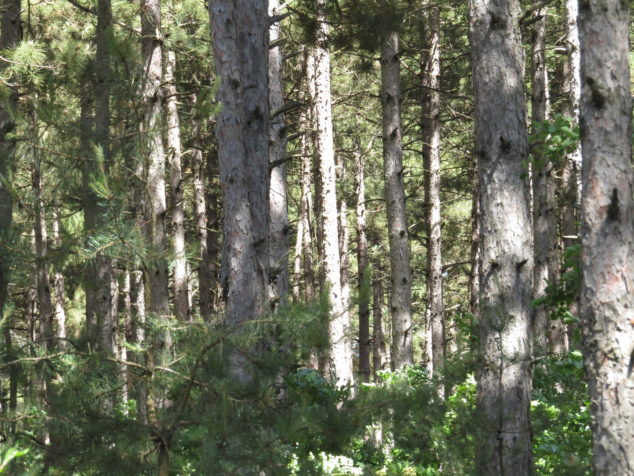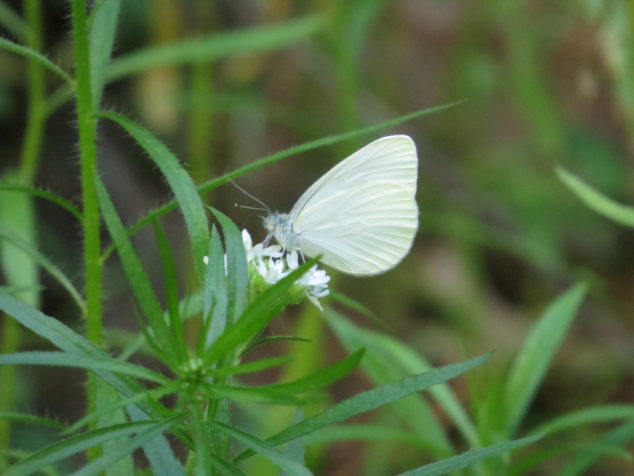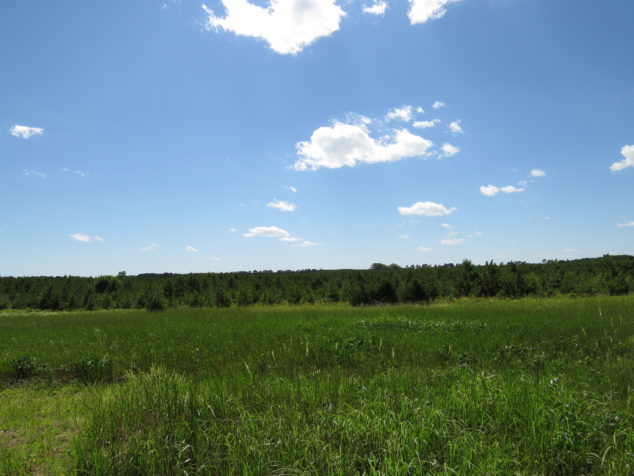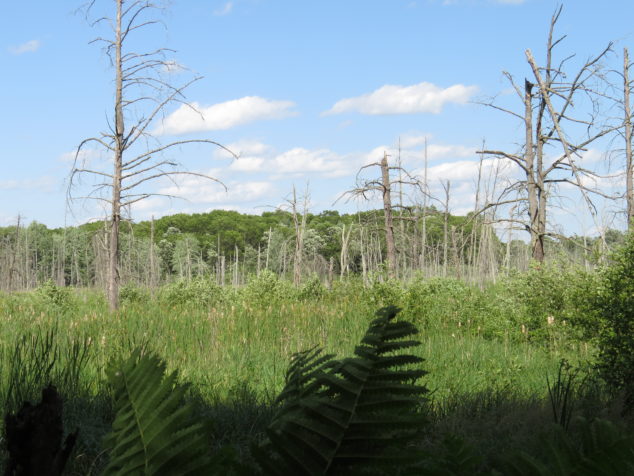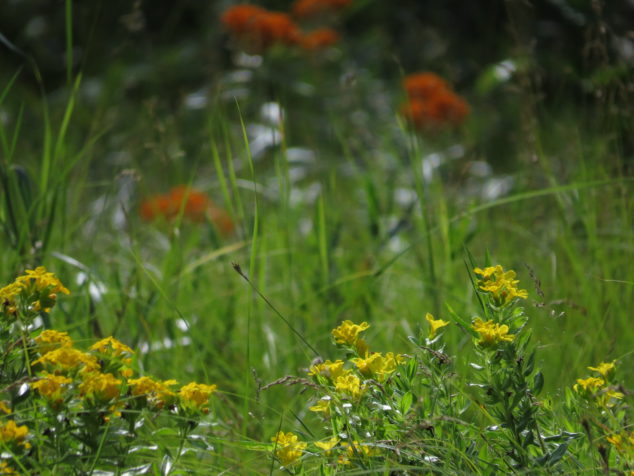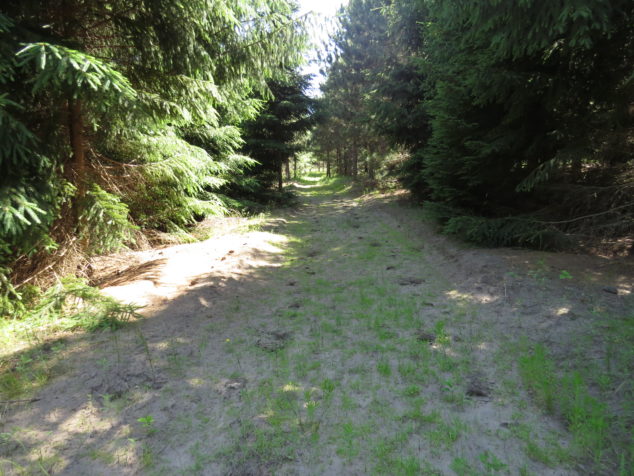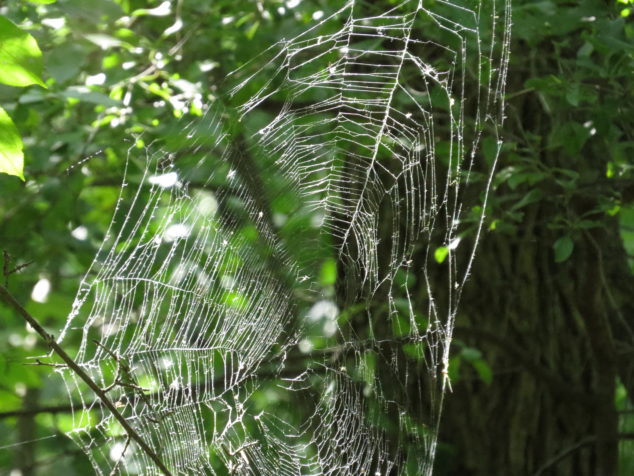The sun is rising farther north in the morning sky and later in the hours of our clock-run days. When I raised the shade of our bedroom window, I saw the morning sun hitting the trunk of an old oak tree in the woods. Usually cloaked in shade and blended in with the other trees, its presence was illuminated for a few minutes by the rising sun. The sun had to peek over the quarry shed, sneak through the spruce trees, and find the opening between the large lilac bushes in order to shine on the rough trunk of the oak.
The low morning sun lit up the grass and goldenrod and produced long shadows of tree trunks.
A busy squirrel carried a huge Buckeye seed in his mouth that he had gathered from the yard down the road from us.
The feathery branches of a young White Pine shimmered in a sea of golden grass.
Saint Francis, who stands among the ferns in the shade garden, was also illuminated by the morning sun.
The morning sun, with its warmth and light, has been a welcome sight these past days. The last two weeks have been kind of tough around here. A friend of mine died suddenly, and as I mourned the loss of such a kind, gentle woman, I was also filled with regrets. We had planned to ride bikes together, and I never made it happen. I was so caught up in my own life that I didn’t go see her or send her a card when she broke her leg recently. We live our lives thinking the people we care about will always be around.
The overwhelming darkness of this past week has been the tearing open of an old wound in our community. The body of a young boy who had been kidnapped twenty-seven years ago was found after a confession from his killer. The details are chilling and horrendous. Our hearts ache for the family that has held his memory and the hope of his return like a bright beacon for all of us. Our tears flowed as the news recounted the facts of the case. And parents held their children more tightly as we watched Jacob’s mother face the unacceptable. Patty Wetterling’s words:
Everyone wants to know what they can do to help us.
Say a prayer.
Light a candle.
Be with friends.
Play with your children.
Giggle.
Hold hands.
Eat ice cream.
Create joy.
Help your neighbor.
That is what will bring me comfort today.
The light of morning. The Light of mourning. Death, despair, hatred, destruction, and every kind of darkness doesn’t stand a chance when the collective rays of light and love are gathered in God’s name. We need to lift up the lives of those who bring goodness and mercy to all those around them, like my friend Joan did. We need to bear the agony of innocent lives lost at the hand of evil and stand with an eternal flame in defiance of the darkness. We need to do whatever it takes to illuminate any darkness within ourselves in order to be a light to others. There is so much we can do to help, as Patty Wetterling suggested and as Saint Francis wrote in his prayer:
Lord, make me an instrument of Thy peace….
where there is hatred, let me sow love;
where there is injury, pardon;
where there is doubt, faith;
where there is despair, hope;
where there is darkness, light;
and where there is sadness, joy.
Love and Light to you all.
